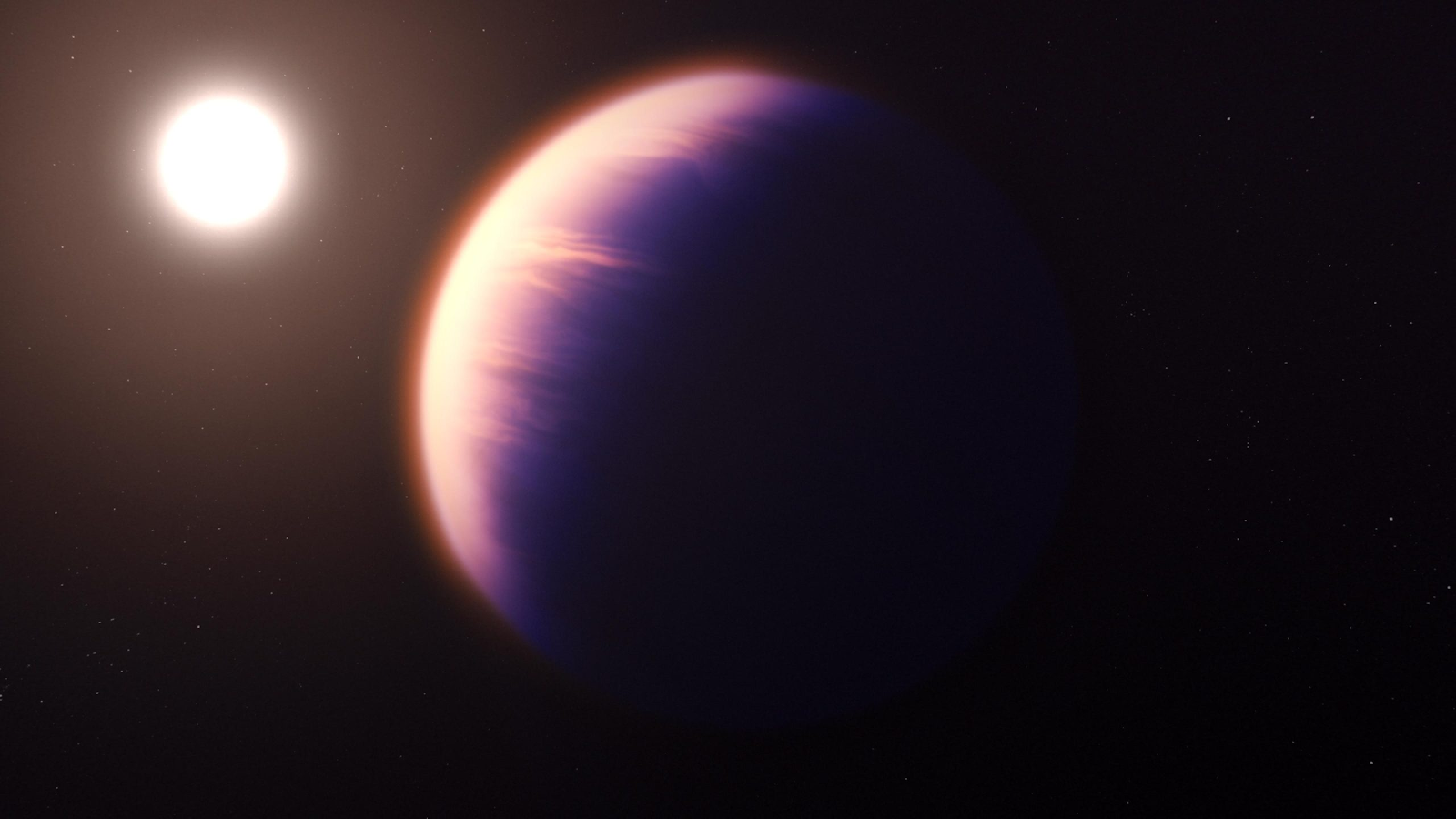Above: Artists' impression of exoplanet Wasp-39B
Exoplanet Wasp-39b has carbon dioxide in its atmosphere. That thing is one of the possible marks of the lifeforms. But there is also the possibility that oxygen is connecting to carbon in the atmosphere of Wasp-39b. The Wasp-39b is a giant exoplanet. It's so-called hot Jupiter and the atmospheric temperature of that planet is 900 degrees Celsius. That is an extremely hot planet, so there should not be any lifeforms.
But there is one possibility that is not what somebody wants to hear. The possibility is that the carbon dioxide is coming from the high atmosphere of some invisible target near Wasp-39b. The object can be some kind of moon near Wasp-39b. There is also water (H2O) and sodium (Na) in that planet's atmosphere.
The Wasp-39b orbits its central star in four days. The mass of the Wasp-39b is one-quarter of Jupiter. So its mass is similar to Saturn but the size is larger than Jupiter. The reason for that is that the Wasp-39B is forming of lighter elements than Jupiter. And that means it's lighter but 1,3 times bigger than Jupiter. The question is why Wasp-39b doesn't lose its atmosphere to its star G-class star Wasp-39 ("Malmok"). That star is slightly smaller than our Sun.
The Wasp-39b orbit time around its star is 4 days. So why Wasp-39 didn't burn that planet to an interplanetary cloud? Why Wasp-39's star wind of ions doesn't blow the Wasp-39b to space? The gravitation on Wasp-39b is not so powerful that it could keep that gas giant in one piece. And Wasp-39 is not any red dwarf. It's quite similar to our sun.
So some people say that Wasp-39 b should not even exist. Many other exoplanets are orbiting their center star in a couple of days. But those planets are orbiting red dwarfs whose surface temperature is about 3500 celsius. Wasp-39's surface temperature is about 5000-6000K (about 4726-5726 degrees Celsius) (The temperature of the Sun's photosphere is 5772K)
There is the possibility that there is another small dwarf or so-called real planet in those solar systems. Even Earth-mass rocky planets are hard to detect if their size is very small. If the earth-mass planet forms mainly of heavier elements like iron and other heavy metals that thing means that its size is smaller than Earth if its gravitation is the same as Earth.
http://exoplanet.eu/catalog/wasp-39_b/
https://www.nasa.gov/feature/goddard/2022/nasa-s-webb-detects-carbon-dioxide-in-exoplanet-atmosphere
https://scitechdaily.com/webb-space-telescope-detects-carbon-dioxide-in-the-atmosphere-of-an-exoplanet/
https://en.wikipedia.org/wiki/WASP-39b
https://en.wikipedia.org/wiki/WASP-39b#WASP-39_(star)
Image: https://scitechdaily.com/webb-space-telescope-detects-carbon-dioxide-in-the-atmosphere-of-an-exoplanet/




No comments:
Post a Comment
Note: Only a member of this blog may post a comment.